In Mérida, Mexico, you never run out of new discoveries
- Share via
Mérida is the Yucatán Peninsula’s cultural epicenter, a genteel mix of provincial and cosmopolitan with a friendly small-town feel, despite its 777,000 residents. As a woman traveling alone, I hadn’t expected to feel as comfortable as I explored the city day and night on my late November trip.
You’ll find excellent cuisine and vibrant markets, as well as a remarkable roll call of cultural, culinary and outdoor events almost every day and night. It’s a great place to prowl shop- and café-lined streets, urban plazas and parks, and the region’s best museums.
Mérida is also a charming, less-touristed base than Cancún and Playa del Carmen for exploring the Yucatán Peninsula’s more remote ruins, wilderness, beaches and cultural outposts.
Within two hours’ drive are the Maya archeological UNESCO World Heritage sites of Chichén Itzá and Uxmal. The Calakmul Biosphere Reserve, another UNESCO site, is one of the largest forest reserves in Mexico, with jaguars, pumas, monkeys and flocks of flamingos. You can swim in cenotes — natural freshwater sinkholes — or explore caves, then take a day trip to gracious colonial missions and haciendas. Though the city is inland, long and quiet beaches are 40 minutes north at Progreso.
A different path daily
I had ambitious plans to do those things outside the city limits, but I quickly fell into a relaxing routine of exploring and never ran out of discoveries.
Each morning I chose a different route to stroll to the city center amid the tolling of church bells and the aroma of freshly squeezed oranges, toasting tortillas and Chiapas coffee.
Breakfast might be a no-frills gourmet lineup of 75-cent tacos at iconic Wayan’e or lingering at Chaya Maya a lively eatery in the courtyard of a traditional colonial house with staff clad in Maya clothing. Its Yucatecan breakfast dishes included my favorite — papadzules, hard-boiled eggs wrapped in tortillas and topped with a luscious pumpkin seed sauce.
On one of my first mornings, I joined a free English-language walking tour leaving from the central Plaza Grande that I hoped would help me get my bearings and sort out the historical background .
The nostalgic clip-clopping of horses on cobblestones reverberated off the grand buildings surrounding the main square. One of them was the late 1540s Catedral de San Ildefonso, built by Spanish conquistadors using relics from earlier Maya temples in the ancient Maya city of T'ho.
Afterward, to escape the midday heat, I headed inside for a closer — and often air-conditioned — look at the Palacio de Gobierno with its vast murals; the Palacio Municipal with town views from the stone balcony; and the palatial Casa de Montejo, a 16th century mansion that was once the residence of the Spanish conquistador leader.
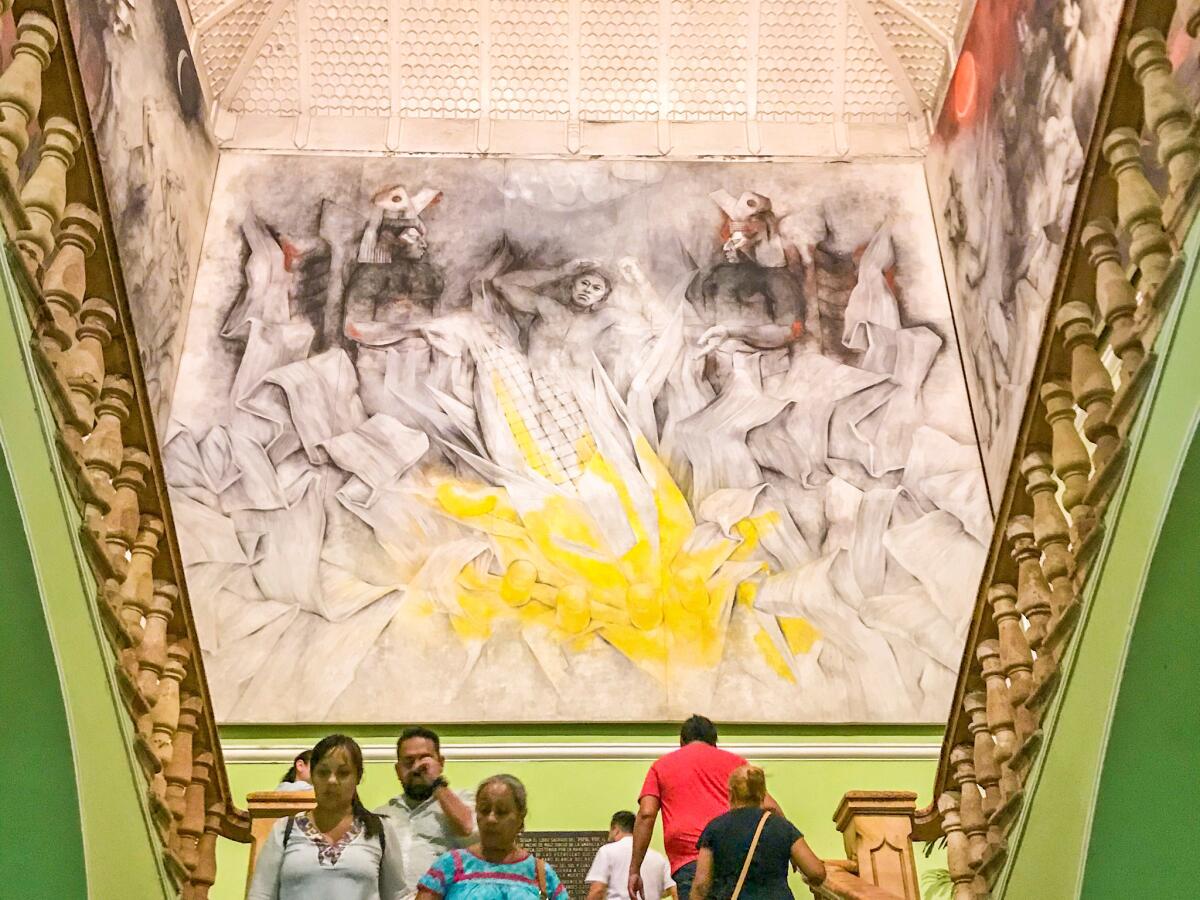
The Museo Fernando García Ponce-Macay was filled with eccentric local and Mexican artwork. Although security guards sometimes asked me to sign a guestbook, all plaza museums and galleries were free.
Mérida is one of those cities where the best entertainment is zigzagging lazily through a maze of candy-colored colonial buildings; poking into small shops and chic galleries; peeking into peaceful courtyards; or stopping for cocktails, microbrews or high-octane coffee at the hole-in-the-wall Café Cafico. I clocked as many as 10 miles one day, people-watching and soaking up culture.
Strolling was stress-less because streets were numbered — even- numbered streets ran north to south; odd-numbered streets east to west. That way, getting home or to a destination was more about math than maps.
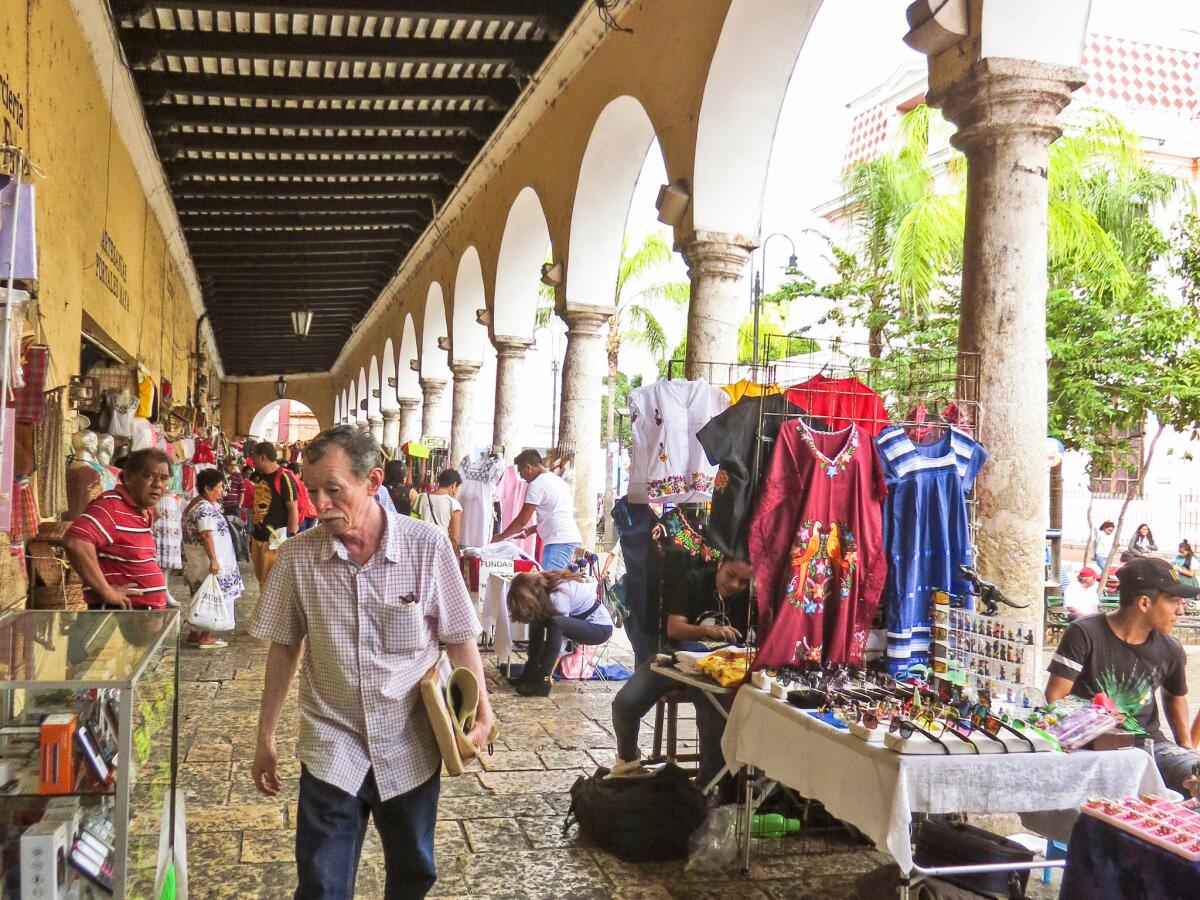
Happily lost
I did, however, purposely get lost weaving through the bustle and chaos of the Lucas de Gálvez Market, Merida’s biggest, a noisy kaleidoscope of local sellers offering fresh produce and fragrant spices and herbs, homemade crafts and local clothing.
At the other end of the cultural spectrum I spent the best part of a day wandering along Paseo de Montejo, a broad, tree-lined avenue inspired by Paris’ Champs-Élysées.
The most interesting stretch of the mile-long avenue ran between two colossal monuments, ending at the ornate Monumento a la Patria that’s encircled by a busy roundabout.
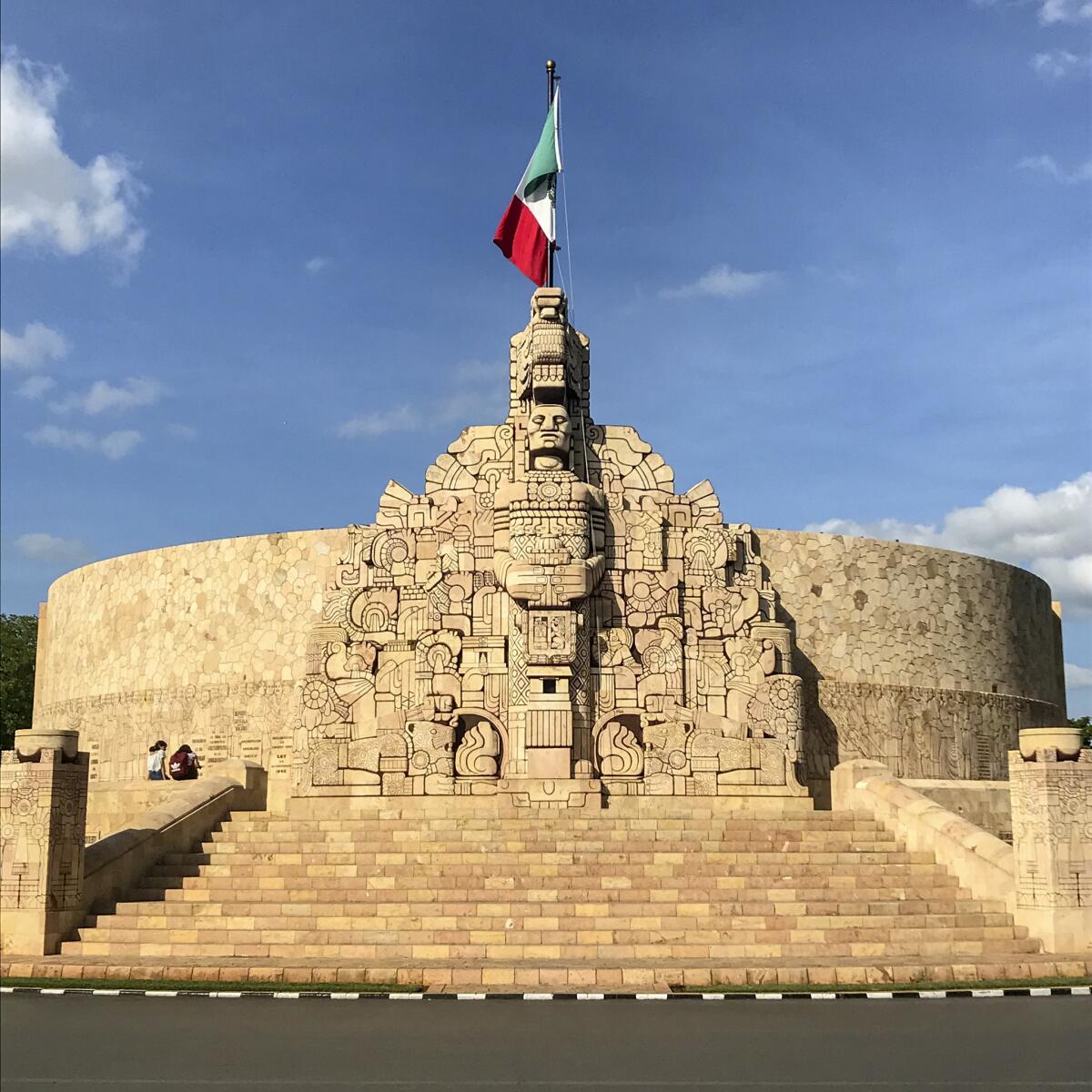
The paseo is lined with white mansions, some dowdy, others elegantly restored and home to stately banks, company headquarters or lush residences. They date from the late 1800s to the 1920s when Mérida boomed as the world’s rope maker with huge demand for henequen, from the sisal plant. When synthetic rope killed the market for henequen, the city became a quiet provincial capital until the late 20th century.
Some of the mansions have been become museums. There are guided tours of the Casa Museo Montes Molina and its period furnishings,where generations of Montejos lived, descendants of Mérida’s founder.

Nearby, the neoclassical Palacio Cantón showcases Maya archaeology on two levels of a big mansion, a more intimate exhibit than the vast Gran Museo de Mundo Maya, designed in the shape of a bird’s nest.
I enjoyed long, lazy lunches, usually in the relative quiet of one of the many shaded parks and plazas around Merida. I’d slip in for a plate of cochinita pibil, slow-cooked pork marinated in sour orange, achiote and other spices, at Manjar Blanco, a simple eatery opposite Parque de Santa Ana that American chef Rick Bayless has raved about.
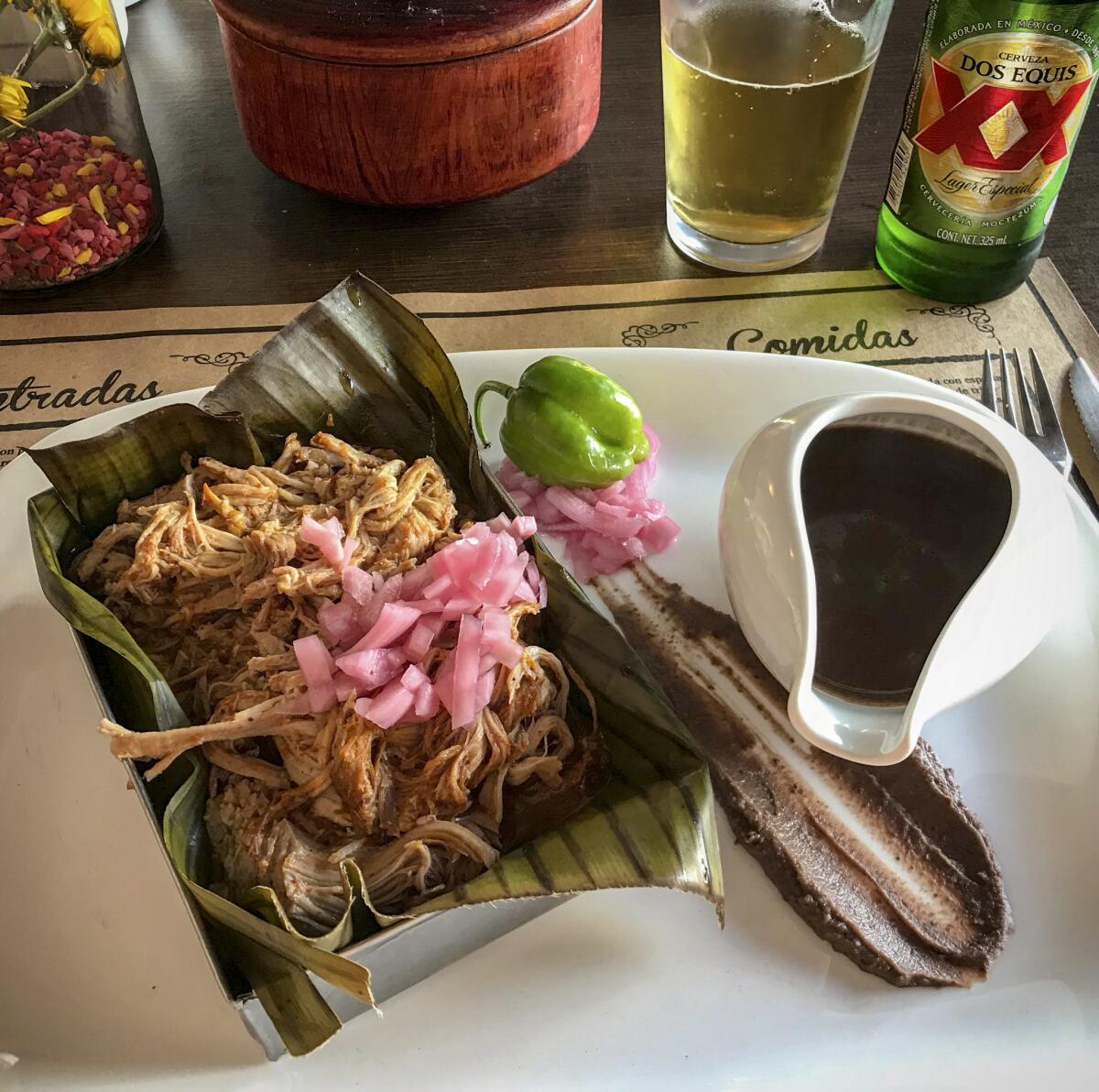
There is a growing number of innovative, modern Mexican fine-dining restaurants, and vegetarian and vegan options are booming. There is even a slow-food market on Saturday mornings just outside the city center.
One of my favorite lunches was at Apoala, which serves Oaxaca fusion cuisine outdoors overlooking Parque Santa Lucia, Mérida’s second-most-popular plaza.
I loved chef Sara María Gomez’s octopus and scallop ceviche and her tempura-fried zucchini blossoms stuffed with cheese. I sipped my way through their creative list of well- crafted cocktails.
Music, dance and more
Free concerts, cultural performances and other events jammed my calendar. Music — traditional and even big band — and folkloric ballet were performed almost every night somewhere in the city. The pace picked up on weekends, a nonstop fiesta when the entire city, it seemed, came out to play.
On Saturday evenings Noche Mexicana celebrated song and dance, including salsa, hip-hop and jazz, along Paseo de Montejo. Sidewalk cafes set up in the streets, families strolled and nibbled from food carts, and shops stayed open late.
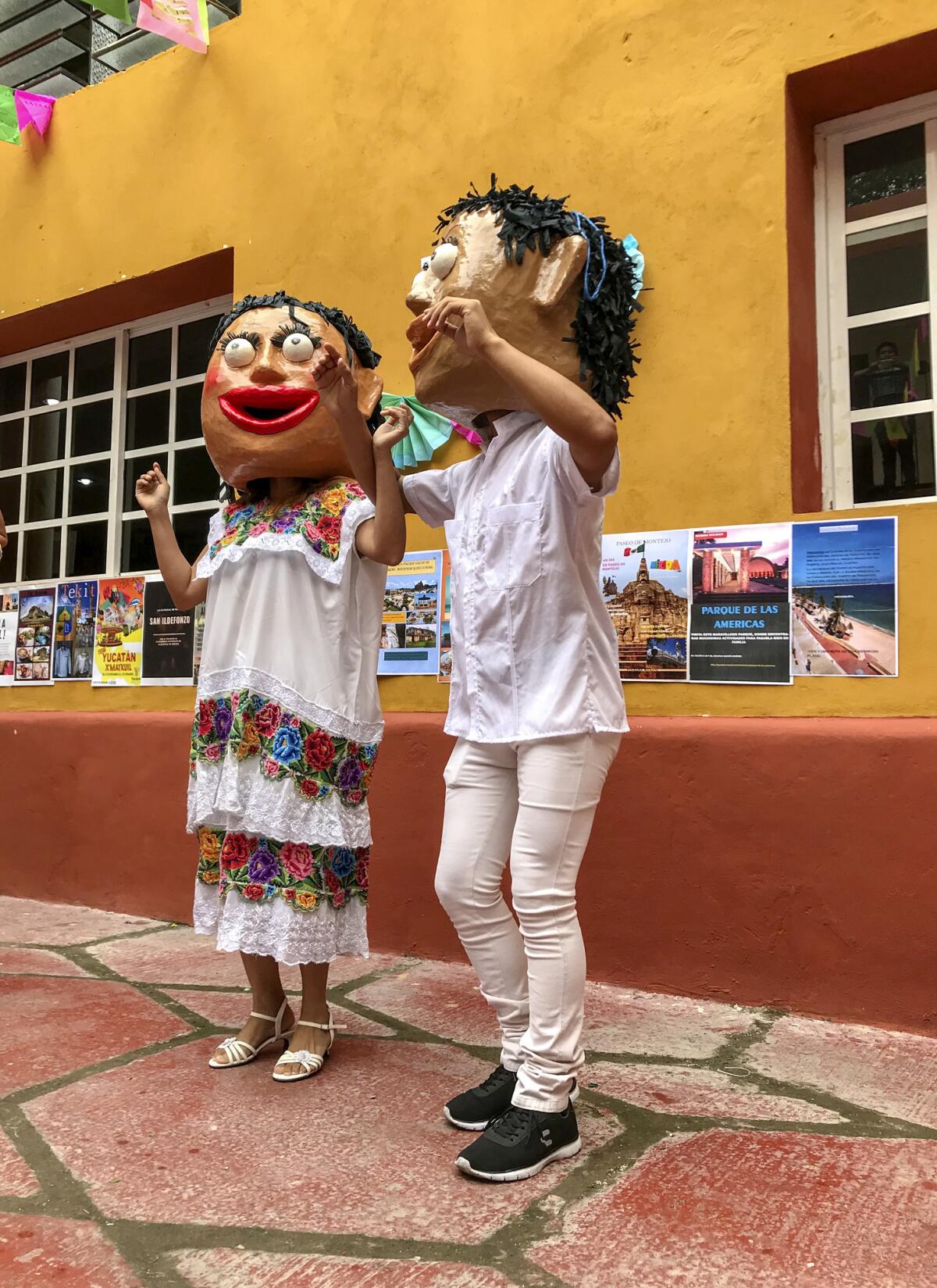
Of course, bars and cantinas were also busy on Saturday with blaring music and fun late into the night. Fairly new on the scene are microbreweries such as Cerveza Patito, whose pints of vanilla porter and wheat beers you can sample at Hermana República, Bela Chela and other taprooms in the Centro neighborhood. Mercado 60 is a lively open-air evening food and drink market that even offers beer yoga.
But Mérida’s traditional cantinas — bat-wing swinging doors ’n’ all — were my favorite hangouts. Once the domain of macho men, several have been delightfully gentrified such as El Cardenal, with its tree-shaded courtyard, and the hip hangout La Negrita. Both offer great live music, a lively social scene and free snacks called botanas well into the night.
On Sunday morning cyclists take over some of the city’s most beautiful and popular streets, such as Paseo de Montejo and Calle 60, are closed for Biciruta (Bike Route). I rented a bicycle from one of the many booths and pedaled amid families and couples.
Meanwhile, Mérida en Domingo, or Mérida on Sunday, transformed the heart of the Centro Histórico, between Plaza Grande and Parque Santa Lucia, into an urban carnival and marketplace for the entire day.
As nighttime approached, bands began to play and people danced under the stars. I picked up a dish of fresh coconut ice cream, sat beneath a chorus of birds roosting in the trees and savored this Sunday night tradition, not regretting for one second that I had never left this charming colonial city.
If you go
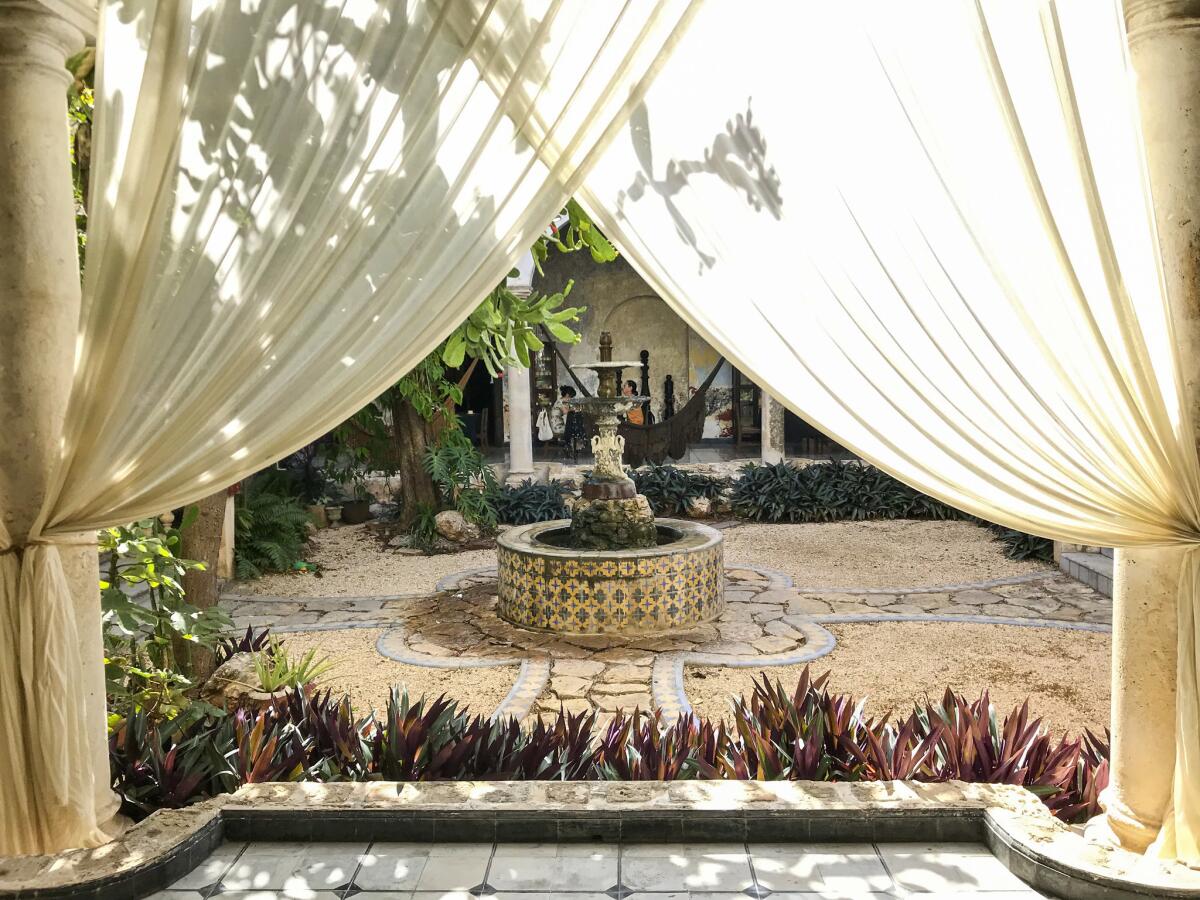
The best way to Mérida, México
From LAX
WHERE TO STAY
Casa Lecanda Boutique Hotel. 471 Calle 47, Mérida, Mexico. Tranquil luxury boutique hotel near Paseo de Montejo. Doubles from $245 a night, breakfast included.
Hotel MedioMundo, 533 Calle 55, Parque de Santa Lucia, Centro, Mérida, Mexico. Colorful rooms in a relaxed, low-rise hotel with a vegan restaurant and a small outdoor pool. Double rooms from $75 with breakfast.
Piedra de Agua, 496 Calle 60, Centro, Mérida, Mexico. Traditional boutique hotel with a quiet courtyard less than a block from Plaza Grande. Doubles from $90.
WHERE TO EAT
Apoala Restaurant, 471 Calle 60, Local 2, Portales de Santa Lucía, Centro, Mérida, Mexico. Stylish Oaxaca fusion cuisine and excellent cocktails. Dinner for two $60.
La Chaya Maya, Calle 57 y 62, Centro, Mérida, Mexico. Traditional Yucatecan cuisine in the garden courtyard of a colonial manor. Lunch for two $35.
Wayan’e, 408-412 Calle 59, Centro, Mérida, Mexico. Casual taco joint with great choices. Arrive early; it’s a popular local hangout and some fillings run out early. Lunch for two $10.
Manjar Blanco, 496 Calle 47, Zona Paseo Montejo, Centro, Mérida, Mexico. Yucatecan traditional and fusion cuisine. Great breakfasts and lunches. Lunch for two $20.
WHERE TO DRINK
La Negrita Cantina, 415 Calle 62, Centro, Mérida, Mexico. Iconic cantina with live music.
Hermana República, 472 Calle 64, Parque Santa Lucia, Centro, Mérida, Mexico. Popular bar with local craft beers on tap.
TO LEARN MORE
Sign up for The Wild
We’ll help you find the best places to hike, bike and run, as well as the perfect silent spots for meditation and yoga.
You may occasionally receive promotional content from the Los Angeles Times.



